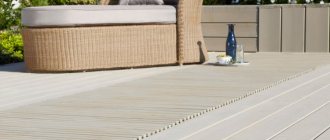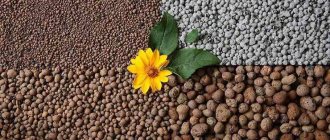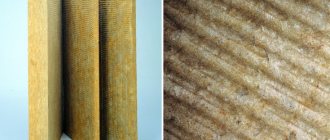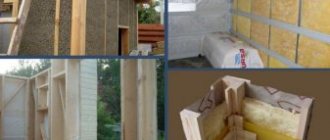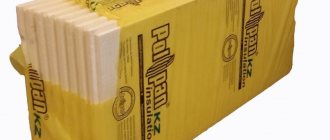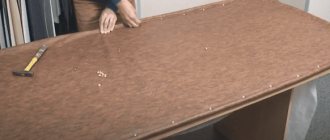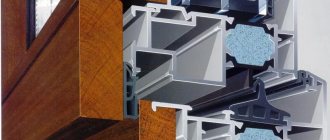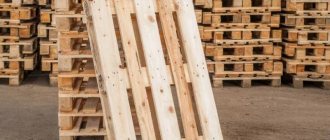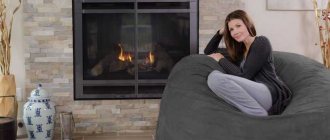The construction market can offer consumers a wide variety of materials for insulation work. Among the most in demand and popular are products made on the basis of polystyrene - extruded polystyrene foam and polystyrene foam. These substances have a wide range of applications, from insulation work to packaging of commercial products. However, most buyers have very little idea of how these products differ. Some even believe that there is no difference between them. However, this is a misconception, since polystyrene foam is quite different from expanded polystyrene. From the article you will learn the features of each material.
Production process - features of insulation manufacturing
Polystyrene foam is a plastic synthetic material that consists of a huge number of small cells filled with air. For production, certain polymers are used, and depending on the selected source material, the foam acquires different properties. Today, the substance is produced from the following types of polymers:
- Polyvinyl chloride
- Phenol-formaldehyde
- Polyurethane
- Urea-formaldehyde
- Polystyrene
The use of this or that material as a base allows you to give the finished product the necessary indicators of strength, quality, reliability, durability and stability. Polystyrene, which boasts excellent performance characteristics, is most often used for the production of foam plastic. Due to this, polystyrene insulation performs well, occupying a leading position in the construction market for a long time.
The manufacturing method of polystyrene foam and extruded polystyrene are different
The difference between polystyrene foam and extruded polystyrene lies precisely in the manufacturing method, because they are based on the same substance - polystyrene. Thus, ordinary foam plastic at the production stage goes through a technological process called steaming. The essence of this process is the exposure of polymer microgranules to water vapor in a special form. High temperature and humidity contribute to an increase in the surface of the granules, which subsequently leads to the formation of fairly large pores. The granules are exposed to high temperature until the resulting foam fills the entire mold.
If the same polystyrene is extruded, the result is a high-quality material called extruded polystyrene foam or penoplex. The differences in the technological process are very significant. First of all, the starting substance must be melted, after which numerous additives and reagents are added to the resulting mass, designed to improve the basic characteristics of the product.
Next, extrusion occurs directly, that is, the entire mass is passed through a special forming tool. The polymer cells are filled with carbon dioxide or natural gas - in the first case, the output is fire-resistant polystyrene. The key feature of this technology is that all cells remain closed during extrusion, which contributes to a more even structure of the material.
Thus, the main difference between expanded polystyrene foam and extruded polystyrene foam is the manufacturing technology of the substance. Accordingly, the properties of the finished substance also differ significantly.
Production of polystyrene foam and expanded polystyrene
Polystyrene foam is a synthetic, plastic material. In essence, it is a small shell filled with gas. Made from different types of polymers. Thanks to this, it is possible to create types of materials with different properties.
So, you can find the following types of foam on sale:
- polyurethane,
- phenol-formaldehyde,
- polyvinyl chloride,
- urea-formaldehyde,
- polystyrene.
Polystyrene foam made from different materials differs in technical characteristics and resistance to different types of influence (mechanical, chemical, influence of natural factors, etc.). Depending on the properties, the scope of its application differs, which allows you to choose the foam that is best suited for specific conditions. The most famous is polystyrene foam, or simply expanded polystyrene, since this type of material is most often used in domestic conditions.
Expanded polystyrene foam and expanded polystyrene are the same material. If you extrude the polymer, you get one of the varieties of expanded polystyrene - penoplex.
What is the difference between extruded polystyrene and regular polystyrene - comparison of indicators
Now let's move on to comparing the technical indicators of different types of insulation. Among the advantages of polystyrene foam, one can highlight its composition, because the percentage of the polymer itself in it does not exceed 2 percent. Ordinary air accounts for the remainder of the substance. It is hermetically located inside the cells, so it is completely immobilized. The resulting stationary air layer boasts excellent thermal insulation characteristics.
For example, the level of thermal conductivity of foamed polystyrene is 17 times better than that of ordinary brick, and 3 times better than that of wood. This suggests that insulating the room from cold and sounds from the outside requires installing relatively thin slabs. For example, a sheet of polystyrene foam 12 cm thick will provide a high level of insulation for a 21 cm wall.
The sound and thermal insulation performance of penoplex is even better than that of foam plastic
If we talk about penoplex, then its sound and thermal insulation performance is even better than that of foamed foam. This is primarily due to the dense, homogeneous structure of the material. For example, a 20 cm thick polystyrene board, extruded at the production stage, provides exactly the same level of insulation of the room from external irritants as a 25 cm thick sheet of foam plastic. Naturally, the difference can differ both up and down, depending on the manufacturer of the goods.
When choosing polystyrene foam as insulation for buildings and premises, you are buying a high-quality material that is resistant to moisture. The material is almost completely impermeable, since polystyrene absorbs liquid only about 3% of its own weight. At the same time, moisture in no way affects the performance characteristics of the material. However, extruded polystyrene can boast even higher performance in this regard. The maximum volume of moisture absorption is no more than 0.4% of the mass of the substance itself.
The use of a similar composition for insulating the facades of buildings and structures makes it possible to save on vapor barriers, since the extruded polymer copes well with the specified functions. However, this cannot be done with ordinary polystyrene foam, since its level of moisture resistance is somewhat lower. Therefore, you won’t be able to save money on purchasing a vapor barrier.
Another indicator that is of great importance to buyers is strength. But here, too, penoplex outperforms its competitor. This is due to the high density of the material structure. The cells of the foam are not so tightly bonded to each other, so they can begin to crumble even with a slight impact. If we talk directly about the numbers, then to compress polystyrene foam you will need to apply a force with a pressure of at least 0.5 MPa, while for foam plastic you will need a pressure of only 0.2 MPa. However, even this strength is more than enough if the material is used exclusively as wall insulation to improve the quality of sound and thermal insulation.
Extruded or extruded polystyrene foam, technical characteristics
Extruded polystyrene foam (EPS) are foam boards that are manufactured using a specific method. Many builders also call EPPS “Polpan”. Unlike conventional polystyrene foam, EPS is made under pressure, i.e., a viscous mixture of liquid polystyrene foam is pressed through nozzles of the required cross-section. This allows you to produce slabs of the desired shape and size.
Since the production of extruded polystyrene foam occurs under pressure, this makes it possible to create a material with strong molecular bonds. Thus, EPS has become an indispensable material in those places where conventional PSB foam cannot withstand loads. Although extruded polystyrene foam EPS has a number of advantages over polystyrene foam, it is necessary to understand its structure and technical characteristics, which provide a clear understanding of the correct operation of the material as a whole.
Content:
Properties and technical characteristics of EPS
EPS is often used for foundation insulation and underfloor heating. Due to its structure, EPS does not conduct heat well through itself, and also has low water absorption rates. If extruded polystyrene foam is placed in water for 1 month, it will absorb moisture only 0.6% of its own volume.
Thanks to these characteristics, EPS is a very good material for insulating foundations and the basement of a house. Only all material requires complete isolation from the external environment due to its flammability. Therefore, when using it, be sure to follow fire safety rules.
Since extruded polystyrene foam has a cellular structure, which is very strong and does not allow gases to penetrate through the material. Thus, the thermal conductivity of EPS is 0.026-0.035 W/m. °C.
Interesting fact: the thermal conductivity of air is 0.025 W/m. °C.
In terms of compressive strength, EPPS also has characteristics superior to those of conventional PSB foam . This led to its use in floor insulation. Since the strength characteristics of EPS allow it to withstand fairly high mechanical loads, it is also often used for façade insulation. But we should not forget that the vapor permeability of extruded polystyrene foam is very low and this does not allow the walls to breathe.
Some manufacturers produce EPS boards with geotextile on one side, which allows it to be used as a waterproofing material, and not just for insulation. Since geotextiles have an uneven surface and are in the form of pimples, this also facilitates water drainage.
Extruded polystyrene foam is coated on one side with a layer of plasticized cement, which allows it to be used for insulating flat roofs or for insulating floors.
Important advice: Do not use glues, mastics and paints containing solvents, as under their influence the EPS is destroyed. Also, extruded polystyrene foam is not compatible with gases (propane, budane, methane, etc.), tar, petroleum jelly, fat, oil, gasoline and fuel oil.
Marking of extruded polystyrene foam
In appearance, extruded polystyrene may differ in color and size. For different manufacturers, each color determines the corresponding technical characteristics of the material. Since there are no state standards on the CIS market yet, manufacturers and consumers use European standards. The main standardizing document is EN 13164:2001 .
The markings of extruded polystyrene foam vary from manufacturer to manufacturer, so let’s look at a few examples of common EPS manufacturers:
Eps Styrofoam is marked IB-A XPS-EN13164-T1-CS(10/Y)250-DS(TH)-TR100
IB-A – surface plane, A – smooth edge;
A XPS – extruded or extruded polystyrene foam;
T1 - this indicator determines the accuracy of the geometric dimensions of the slab;
CS(10/Y)250 – strength characteristics of the material, at 10% deformation the compressive strength is 250 kPa;
DS(TH) – the ability of the material to maintain geometric dimensions at temperatures up to 70 °C, deformation – 5%;
TR100 – minimum compressive strength – 100 kPa.
A separate line indicates thermal conductivity - ƛ resistance - R , fire resistance - E. Expanded polystyrene from this manufacturer is blue in color.
Isofoam brand is labeled X2, X3, X4, XR, XPH . The marking gives general concepts about the technical characteristics: strength, density, thermal conductivity, dimensions, etc. The marking for the shape of the edge of the slabs is also different: I – flat end; L – groove end; D – tongue and groove.
An example of marking of extruded polystyrene foam of the Penoplex - 35GS-30 .
35 – indicates the type of material (possible types are 30, 35 and 45);
Scope of application – where polystyrene-based materials are used
Despite the obvious advantages of extruded polystyrene, many consumers, especially in our country, prefer foam plastic. This is due to cost - the price of penoplex is significantly higher, and the difference can reach several times. Naturally, ordinary consumers, not knowing the difference between the products, choose foam plastic.
However, in some countries, including Western Europe and the USA, the use of polystyrene foam is already prohibited, due to the release of harmful and toxic substances in the event of a fire insulation. In this regard, experts recommend purchasing reliable and high-quality extruded polystyrene. But it should be understood that it also does not belong to the category of completely environmentally friendly and toxin-free products.
Despite the fact that penoplex outperforms foam plastic in many respects, the latter still belongs to the category of very high-quality and durable insulation materials, outperforming most other competitors in comparison. In addition, in some situations it is possible to use exclusively foamed polystyrene. For example, the finishing of building facades involves foam plastic, since it has ideal parameters for air permeability and moisture absorption. In this case, finishing walls with extruded polymer is problematic due to the insufficient level of adhesion.
Due to its high qualities, this material is ideal for insulating houses.
Penoplex is excellent for insulating balconies and loggias. And here it’s not just about high performance. As a rule, these rooms are not very spacious, so it is necessary to use thin sheets of insulation that will save as much usable space as possible. Naturally, the difference in the thickness of the sheets is not too great, but you can still win 5 cm from each wall.
Basements, ground floors, as well as the foundation should also be insulated with extruded polystyrene foam. Polystyrene foam does not have the appropriate quality indicators to reliably protect these premises from moisture and steam, which are available in large quantities here. Otherwise, you will have to use very thick slabs of foam to achieve the desired result. If you need to insulate the floor in a living room, then there are no special requirements. After all, both materials do an excellent job of insulating rooms; even fairly dense foam plastic can easily withstand any weight for a very long time.
Thus, the difference between ordinary foam plastic and extruded polystyrene foam still exists and is quite significant. Despite the polystyrene that is used to make both substances, they differ in reliability, durability, moisture absorption and, of course, price. But the quality of insulation is in any case very high, regardless of the chosen product.
A little more about the properties
In addition to the fact that extruded polystyrene foam is used in large-scale construction, it can also simply serve as packaging material. It is perfect for this role, as it has good shock-absorbing properties and low density.
Due to the fact that extruded polystyrene foam is an environmentally safe material (plus its strength and heat resistance), it can also be used for the construction of household, and not just industrial, facilities.
The sound insulation properties of extruded polystyrene foam are better than those of mineral wool or polystyrene foam. Installation of polystyrene foam boards is quite easy. But the main advantage of the material is its high strength. Due to its strength, it can serve not only as insulation, but also as a full-fledged building material.
More on this topic on our website:
- Energoflex for pipes - technical characteristics of insulation Engineering systems need noise and heat insulation. A material such as energyflex is ideal for this. These polyethylene foam tubes are durable, strong, and can withstand aggressive environments…
- The PVS wire, the decoding of which sounds like “connecting wire in a vinyl sheath,” is used for transmitting electricity in industrial and domestic conditions….
- VVGNG LS includes current-conducting copper cores, consisting of one or more wires of different shapes, made in accordance with GOST 22483. Index…
- The PUGNP wire, the abbreviation of which sounds like “universal flexible flat wire,” is widely used by electricians. The wire is available in two versions: two-core and three-core. No matter,…
Pressed polystyrene foam
It is produced by the pressing method in the presence of latex grades of polyvinyl chloride and gas-forming agents. The structure of the material contains closed cells.
It has the following properties:
- good electrical insulation characteristics;
- low water absorption;
- excellent heat and sound insulation characteristics;
- the material is radio transparent;
- has high biological resistance (cannot serve as a breeding ground for fungus and bacteria).
These properties determined its use as heat and sound insulation:
- thermoses and refrigerators;
- special containers;
- bodies of wagons and motor vehicles;
- in shipbuilding to reduce the weight of the ship's hull.
High electrical insulation characteristics allow it to be used in the production of products in the electrical and radio industries. Due to its radio transparency, it is also used in radio engineering.
Types of expanded polystyrene
The spread of PPS was a response to a request for insulation that can effectively retain heat in buildings built from traditional building materials. In large cities, huge amounts of money are spent on heating buildings in winter. And emissions from thermal power plants lead to a significant deterioration of the environmental situation.
Among many areas, one of the most successful has been the use of expanded polystyrene, obtained by foaming polystyrene when processed in the presence of high temperatures.
The final material has the form of granules, the diameter of which varies from 2 to 8 mm, which are sintered together when exposed to steam shock.
As a result, a material was developed that can only be compared with mineral wool in terms of thermal insulation properties. It is interesting to compare PPS with other materials.
A sheet of material 10 cm thick can replace:
- 400 cm of heavy concrete;
- 150 cm building bricks;
- 100 cm of expanded clay concrete;
- 60 cm of aerated concrete;
- 40 cm of pine wood.
Also, due to the presence of closed pores in the structure of the material, it perfectly reflects sound, therefore it is often used as sound insulation.
Depending on the production technology, expanded polystyrene is divided:
- for pressless expanded polystyrene (PSB);
- pressed polystyrene foam (PS);
- extruded polystyrene foam (EPS).
These types have some differences not only in technology, but also in characteristics. Therefore, their areas of application also differ.
